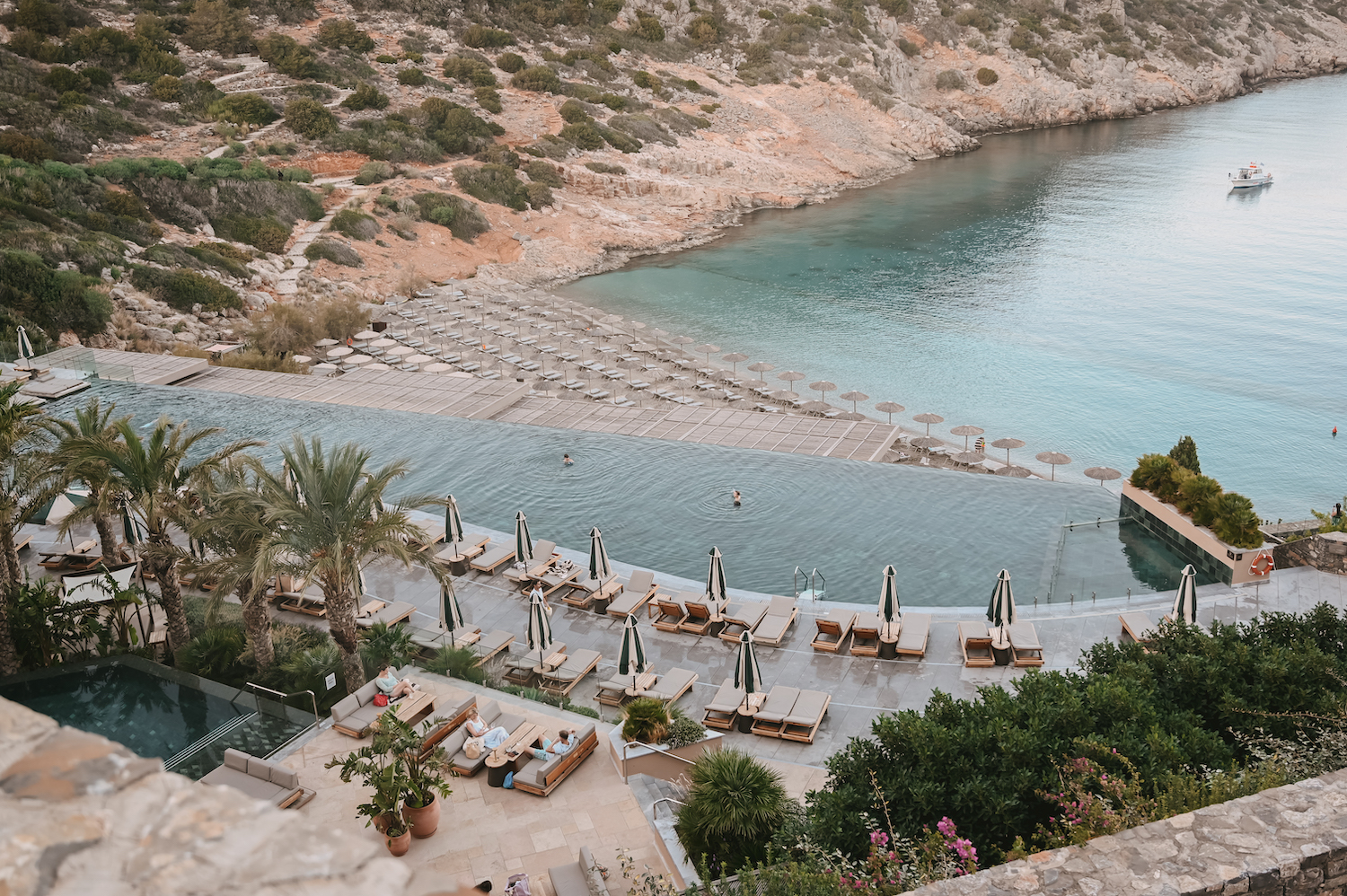For several years Tokyo has held the record for being the city with the most number of Michelin-starred restaurants. Of all those restaurants, thirteen of them have three Michelin stars and I was determined to try one of these world-class restaurants. As I looked through the list I settled on Nihonryori Ryugin, serving Japanese cuisine with a modern twist and ranking No.29 on the The World’s 50 Best Restaurant 2015 by San Pellgrino.
Many of the top restaurants in Tokyo are difficult to book – with limited seating, websites only in Japanese and some refusing entry to foreigners who do not have full understanding of their cuisine. The easiest route for those coming from the UK is to ask your hotel to book, and in fact Ryugin only take bookings from the hotel.

Fortunately the excellent concierge at Mandarin Oriental Tokyo secured us a booking at the sought after restaurant and we were excited to head there on our second night in Japan. We were careful to be punctual with our reservation and as instructed we wore no perfume or aftershave as the dishes are prepared in delicate balance to simulate the senses and extra scents could compromise the preparation.

With only twenty seats, the restaurant has a very simple interior so that absolutely nothing detracts from the food and the customers are fully focussed on the high level cuisine that they will be sampling. Whilst camera aren’t banned at the restaurant, they are not encouraged and DSLRs aren’t allowed, hence the slightly dodgy phone pictures. The website explains why cameras are discouraged rather eloquently; Japanese cuisine is ‘the feast that cannot be seen with the eyes’ and as you try hard to get the food from every angle the perfect preparation and minute timing of the dish deteriorates. You are encouraged to enjoy the ‘fleeting moment’ of the dish and record it with your memory rather than a camera. 
I do fully appreciate this concept but I really wanted to record the experience and write about it my blog, so rather than my usual twenty photos, I took a very quick snap on my iPhone.
Chef Seiji Yamamoto presents a meal based on traditional Kaiseki cuisine, a Japanese multi-course dinner that represents the highest levels of cooking, preparation and ingredients. However, there is incredible innovation at work in the chef’s cookery and his use of molecular gastronomy has broken new ground. There is one set menu at the restaurant and the website advises if you have dietary requirements or allergies that prevent you from partaking in the set menu then bookings will not be accepted as it would compromise the quality of the food too much.

Chef Yamamoto focuses on the changing seasons of Japan and the rich ingredients of the country. This first dish of firefly squid, butterbur and young pea was an exploration of sensation and seasonality with different aromas, temperatures and textures all at work to create the perfect combination. 
Next was surf clam, something I don’t think I’ve eaten before, but it had a very delicate flavour and a slightly chewy texture. 
The philosophy behind the dishes is that they appeal to all the senses and not just the taste buds. The next dish was entitled ‘Owan Soup: Philosophy of the Ichiban Dashi or Taste of the Wind that Captures the Moment’. In the broth was greening (a fish I’d not heard of before), lotus root and blue yuzu. I must confess that it was the dish that made me realise that my Western palate was nowhere near honed enough to appreciate the subtleties of Japan food. I’m sorry, but to me it tasted like poached fish in boiling water – I wish I could appreciate it for it’s freshness and simplicity but it was a little lost on me.

More familiar to me was the sashimi platter, a dish that was billed as ‘A Message from the Coast of Japan.’ It is one of the signature dishes at Ryugin and only the very best fish of the day is used. Now, I always find it odd when bloggers and reviewers use the word ‘fresh’ to describe food, especially sashimi. I always think, ‘well, you’d expect it to fresh, surely that’s a given?’ But the fish and sashimi in Japan give a new meaning to the word ‘fresh’, so very fresh that you could taste the sea in these slivers of bonito and squid. 
The next dish was based around Binchotan or charcoal and the flavours of the dishes were intended to give a ‘Powerful scent of charcoal grill.’ On the plate were grilled sea perch with sesame, taro potato and mustard vinegar. The more smoky flavours of the dish were delicious, and perhaps something a novice eater of Japanese food could understand more. 
The gentle flavours of of this dish of Goemon Tofu, sea urchin and abalone are intended to give a sense of relaxation and calm. I think the sea urchin is rather an acquired taste with it’s creamy texture and strong taste of the sea. If you didn’t know the edible part of the sea urchin, also known as uni, is actually the creatures gonads and is a rare delicacy – honestly though, I’m not a huge fan. As I mentioned in a previous post abalone is actually an edible sea snail; the taste is rather mild and the texture chewy like squid, some people may be put off by the idea of eating a sea snail but it’s really quite tasty.

You may notice that the kaiseki dinner was dominated by fish and vegetables and next up was the only meat dish ‘Sanuki Olive Beef’. The beef is produced only on Shodoshima island in Kagawa, the chef’s home town. Cattle feed is created from the parts of olives that are usually discarded after they are pressed and wagyu beef that is produced from the cattle has a distinct flavour as a product of the olives and the climate of the island. It is a premium beef of the highest quality and tasted absolutely sublime… the portion size is teeny tiny though. 
In the UK Japanese multi course dinners are usually served with rice on the side but it wasn’t until my trip to Japan that I discovered rice is traditionally served at the end. I much preferred this as it stopped me greedily eating too much rice. The simmered rice is flavoured with cherry blossom tea and topped with sakura shrimp from Surugawan bay along side was miso ‘chrysanthemum’ soup the national flower of Japan. 
A dish entitled ‘Lusciousness – Coolness, warmth, playful spirits, nostalgia and temptation’ was the most perfect heart-shaped strawberry with sakura ice cream. The deceptively simple fruit was actually an example of Yamamoto’s signature dessert, a candied fruit frozen at -196 degrees using liquid nitrogen and filled with ice cream. I found a video that shows the process and it really does underline the time and effort that goes into the preparation of the kaiseki dinner when you realise it takes several hours to create a single strawberry.
The final course, billed as ‘Hot sake and cold sake sweet flavours,’ did not look how I expected it to. A beautifully fluffy souffle lightly flavoured was accompanied by a sake flavoured ice cream.

So what are my final thoughts on Nihonryori Ryugin? Well the meal was incredibly expensive but when you see the time, effort and precision that goes into creating these dishes plus the premium ingredients you can see why. I really wanted to love this meal, given my love of Japan food and culture but I realised that tastes were not honed enough to fully appreciate it which made me feel like it perhaps wasn’t worth spending such a large amount of money on a meal. I hate to say that I left feeling slightly under-whelmed, but I can’t help but think that was my own fault!
Nihonryori Ryugin
Side Roppongi Bldg
Ground Floor 7-17-24
Roppongi
Minato
Tokyo




















